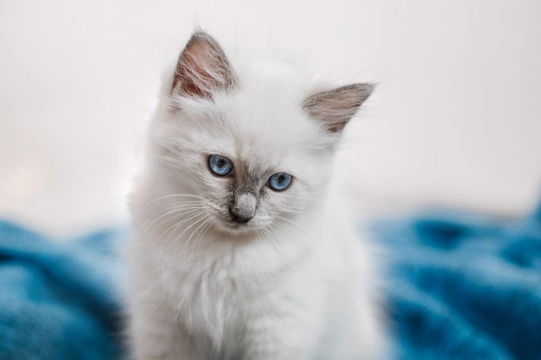
Caring for a Ragdoll cat
The Ragdoll cat is a large breed with a semi longhaired coat that is soft, silky and very stroke-able! They have blue eyes and a distinctive colourpoint coat, and are renowned for their sweet natures, placid tempers and loving relationships with their owners. The breed was named the Ragdoll due to the propensity of some cats of the breed to fall totally limp when picked up, in the manner of a rag doll!
Due to their lovely fur, attractive appearance and kind tempers, they are popular as pets all across the world, and particularly in the UK. They are relatively quiet and undemanding, and are excellent housecats, preferring a warm fire and a soft lap to going out exploring and hunting! However, due to the fact that they are not very worldly wise and have long hair, they do require a reasonable amount of care and attention to be paid to them, and should not be thought of as the average independent domestic moggy. If you are considering owning a Ragdoll cat, it is important to find out more about the breed and their specific care requirements before making a purchase, and this is something that we will cover in this article. Read on to learn more.
Caring for the Ragdoll’s coat
The Ragdoll coat requires regular grooming and attention, as it is semi-long and very soft. However, it is not prone to matting up or becoming knotted, and so it is not as challenging to care for as that of some longhaired cats.
It is wise to get the cat used to being brushed and groomed on a daily basis while the cat is young, so that they will come to actively enjoy grooming and be amenable to having their coat cared for. Their coats can come in various different lengths and textures, but they are always straight and silky, and easy to brush through.
It is important to brush right to the roots of the fur, but use only soft-bristled brushes as the coat is not overly thick or heavy, and hard or stiff brushes will be too harsh on the cat’s skin. Ragdoll cats also tend to be fastidious about their own grooming, and are highly unlikely to ever need bathing due to getting mucky! They tend to avoid getting into a mess, and are not likely to pick up a lot of muck or debris if they go outside.
Ragdoll cat health
The Ragdoll cat breed is one that possesses a heightened degree of inbreeding, with around 45% of the genes possessed by the entire breed being able to be traced back to just one founder cat.
Due to this, the Ragdoll cat is particularly prone to some hereditary health problems, and the breed as a whole are not particularly long lived, with only 63% of cats of the breed living beyond ten years of age.
Kidney and bladder problems are a particular problem within the breed, with polycystic kidney disease being prevalent within the Ragdoll gene pool, and other issues including urinary problems, bladder stones, kidney stones and urinary tract infections also occur within the breed with a reasonable degree of repetition. It is wise to begin your life with a Ragdoll with an awareness of problems of this type, and get them checked out by your vet regularly to ensure that no problems in their early stages are beginning to arise.
It is also a good idea to get some basic blood and urine panels run on the cat once they reach a year old, in order to develop a baseline picture of the cat’s health, and so that any later anomalies can be identified early on.
The Ragdoll nature and keeping them safe
The Ragdoll cat’s nature is rather distinctive from that of most other cats, and they are not particularly streetwise. They are very trusting and do not have a great degree of natural suspicion, which means that they can land in hot water without trying too hard! Special care should be taken if you live near to a road, as the Ragdoll is not renowned for being sensible around traffic, and you should also take care to ensure that your cat will not be placed at risk from neighbourhood dogs.
Ragdolls are very kind and gentle, which makes them popular with families with children, however it is very important to ensure that your kids know how to handle the cat properly, and when to leave them alone, as the Ragdoll is unlikely to protest if handled too roughly.
While the vast majority of cats within the UK are kept as indoor/outdoor cats and allowed to go outside on their own, the Ragdoll is one breed that is often commonly kept indoors only, or with only limited or supervised access to the outside world. There is some merit to this style of ownership when it comes to keeping the cat safe, but an enclosed garden or outdoor run can provide a good compromise between protecting the cat and allowing them to go out as nature intended.



